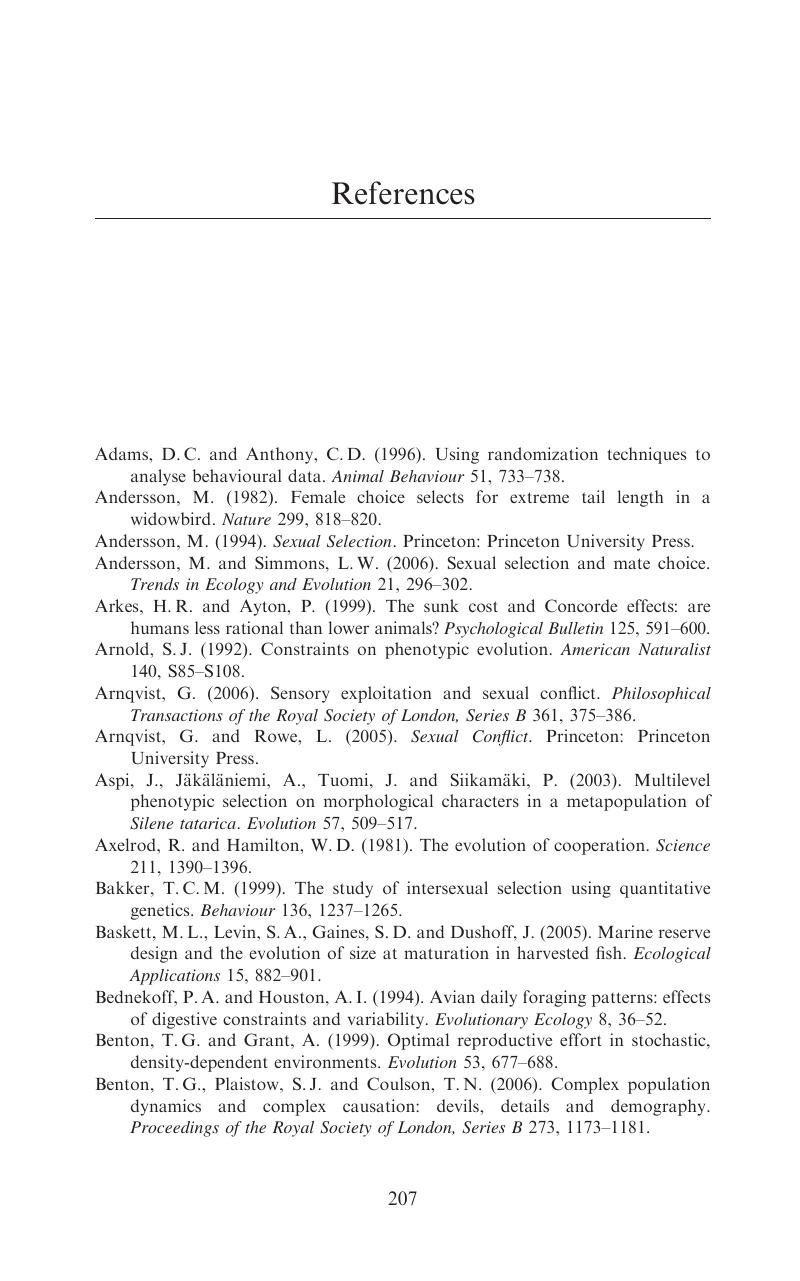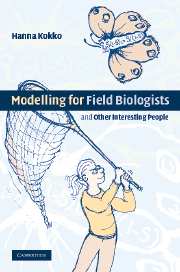Book contents
- Frontmatter
- Contents
- Preface
- 1 Modelling philosophy
- 2 Population genetics
- 3 Quantitative genetics
- 4 Optimization methods
- 5 Dynamic optimization
- 6 Game theory
- 7 Self-consistent games and evolutionary invasion analysis
- 8 Individual-based simulations
- 9 Concluding remarks
- Appendix: A quick guide to MATLAB
- References
- Index
- References
References
Published online by Cambridge University Press: 05 June 2012
- Frontmatter
- Contents
- Preface
- 1 Modelling philosophy
- 2 Population genetics
- 3 Quantitative genetics
- 4 Optimization methods
- 5 Dynamic optimization
- 6 Game theory
- 7 Self-consistent games and evolutionary invasion analysis
- 8 Individual-based simulations
- 9 Concluding remarks
- Appendix: A quick guide to MATLAB
- References
- Index
- References
Summary

- Type
- Chapter
- Information
- Modelling for Field Biologists and Other Interesting People , pp. 207 - 220Publisher: Cambridge University PressPrint publication year: 2007



